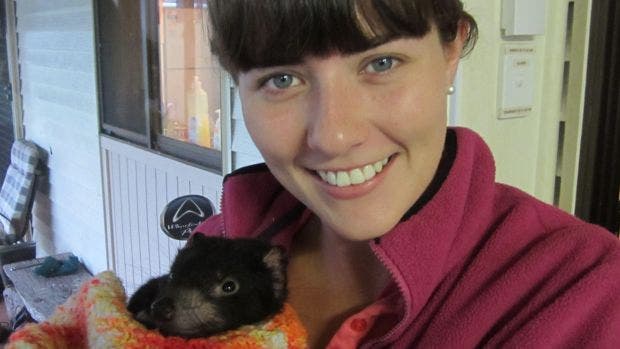
Devil’s milk has proven to be an unexpected but extremely efficient weapon in the global fight against superbugs. Australian researchers have discovered that peptides in Tasmanian devil milk can kill some of the most threatening and hard to fight infections.
“It was really exciting,” said PhD candidate Emma Peel who conducted the research. “We showed that these devil peptides kill multi-drug resistant bacteria, which is really cool,” she said.
An unlikely solution
The Tasmanian devil has an extremely short gestation period of jus 21 days. After such a short period, the babies (called joeys) are highly underdeveloped and vulnerable to all sorts of infections and diseases. Under these conditions, it was expected that the mother’s milk provides a much-needed protection. This was the inspiration for the study.
“There are potential pathogens present in the devil microbiome, so the fact that the under-developed young in the pouch don’t get sick was a clue something interesting was going on,” Ms Peel said. “That’s what inspired our most recent study.”
Among the drug-resistant bugs which Emma Peel tested was the golden staph – Staphylococcus aureus. This usually harmless pathogen is carried around by some 30 percent of all people in their nose or on their skin. However, if it gets into the bloodstream via a wound then it can become extremely dangerous – even lethal. The golden staph has proven quite resilient and year after year, it is becoming more resistant to drugs.
The other problematic pathogen they tested was the bacteria enterococcus , which is resistant to the mighty vancomycin antibiotic.
“Vancomycin is a pretty potent antibiotic and if a bug is resistant to that, then there aren’t a lot of drug options available to you,” Ms Peel said.
A devastating problem
This is where this study could step in. It could provide a novel treatment approach where everything else is failing and could even help us tackle a global crisis. Drug-resistant bacteria are a global threat, and according to the World Health Organization, one we are not currently prepared to deal with.
Antimicrobial resistance (AMR) has developed to threaten the effective prevention and treatment of an ever-increasing range of infections caused by bacteria, parasites, viruses and fungi. The magnitude of the issue is hard to estimate, but the fact is, pathogens seem to develop AMR faster than medicine can develop new strains of antibiotics, so it seems somewhat unavoidable to reach a tipping point one day; that’s what a WHO report concludes as well.
But while Tasmanian devils can help us, we also have to help them. Tasmanian devils are having the fight of their lives against Devil Facial Tumour Disease (DFTD), a transmissible type of cancer – the worst kind of diseases, and so far, they aren’t doing so well. Since DFTD was discovered in 1996, the population has dropped by over 85 percent.
“Any hopes of resistant animals in the wild are fading,” says Adrian Good, a supervisor at Devil Ark, an NGO which attempts to save the little devils.
This is yet another reminder that nature could host many valuable opportunities for us, if we care enough to preserve it.






